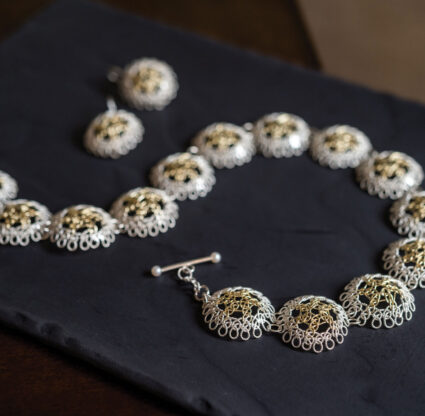Could there be a better museum guide than the head of the Smithsonian? We didn’t think so—which is why we asked Dr. David J. Skorton to offer his advice on how to get the most out of a museum visit, be it at a Smithsonian museum or a much smaller site in Southwest Florida.
Skorton comes to Naples this month to speak at the annual Imagine Solutions Conference, a one-day TED Talk-like gathering that will bring together dozens of thought leaders and their insights to Southwest Florida.
Skorton, the 13th secretary of the storied institution, is at the helm of a vast landscape of what the Smithsonian calls “the world’s largest museum, education and research complex” with 19 museums, 21 libraries, the National Zoo, and several education and research centers. As such, Skorton, is a busy man. He took a quick break from work in Washington, D.C., to chat with Gulfshore Life.
Go
 |
|
Dr. David J. Skorton |
“My first piece of advice would be to go. Go to the museums! Of course we would love to have your readers cross our thresholds and enjoy some of the national collections,” he says. “There’s something for everybody, to put it mildly.”
The Smithsonian collection includes an estimated 155 million objects.
A little background on those objects:
Only about 2 percent are actually on display at any given time. The bulk of the objects, about 145 million, are scientific specimens at the National Museum of Natural History. Its paleobiology collection counts 4.26 million fossil specimens. Other collection highlights offered by the Smithsonian press department: the Star-Spangled Banner, a 3.5 billion-year-old fossil, the Apollo lunar landing module, and Dorothy’s ruby slippers from The Wizard of Oz.
But along with the Smithsonian, Skorton urges people to visit other museums, large and small. Even before Skorton ascended into the Smithsonian’s top spot in 2015, he made a habit of visiting local and regional museums.
“There are others that are not as well-known and yet are gems with interesting information about a community, about a group of people, about a phenomenon, or information about an area,” he says.
And, there are tens of thousands of options. Roughly 35,000 museums exist in the United States, according to a 2014 estimate from the Institute of Museum and Library Services. The figure was double the 17,500 estimate from the 1990s.
Florida is not a museum hotbed. Less populous states of Ohio, Illinois and Pennsylvania boast more museums than Florida. Indeed, much of the South counts fewer than 10 museums per 100,000 residents.
For those of us from northern states, these estimates back up a feeling: that museum options can be scarce. This feels especially true this season as The Baker Museum at Artis—Naples remains closed for its 2017-2018 season after Hurricane Irma damage. This seems like a legitimate excuse for an out-of-state trip. One bonus: Entry to the Smithsonian museums in Washington, D.C., is free.
Related: Dr. David J. Skorton Speaks at Imagine Solutions
Consider an Approach
“If you do decide to go, there are really two main approaches.”
These approaches, Skorton notes, are not steeped in scientific evidence but rather his personal observations. Skorton is a cardiologist by training.
 |
|
The rotunda of the historic Arts and Industries Building |
He sees visitors deploy the “walk-through,” or basically moving at a steady clip and stopping whenever they’re inspired to dig deeper.
“Just let yourself walk through and not worry about accomplishing anything but to just enjoy it,” Skorton says. “We don’t usually give quizzes to our visitors.”
There’s also the “destination” approach: selecting a museum based on desire to see an anticipated object or a well-known exhibit.
One anticipated object of late is the October donation of First Lady Melania Trump’s 2017 inaugural ball gown to the Smithsonian’s popular First Ladies Collection at the Natural Museum of American History. The collection includes 26 dresses and more than 160 other objects. It was the first Smithsonian display to prominently feature women when it opened in 1914, according to the Smithsonian.
“You can see American history through the lens of fashion and the inaugural ball,” Skorton says.
Enjoy, Relax and Learn
Skorton encourages openness to stumbling upon lesser-known objects.
“Around every corner in the Smithsonian is some hidden treasure that is worthy of learning about and being inspired by,” he says. “One of the really fun things to do is just walk in the museum, go to see a blockbuster object or blockbuster exhibition, and then notice something that I may never have noticed before.”
One of his tricks is asking museum security officers for direction: What do you think? Which piece speaks to you? This method has served him well in the Freer Gallery of Art and the Arthur M. Sackler Gallery—which are the Smithsonian’s Asian art museums and among his most “beloved museums”—and large sites like the National Air and Space Museum.
“There’s so much to see you can’t get it done in one visit,” he says.
 |
|
Dr. Skorton assisting a visitor. |
Speaking of that, how does a visitor not get overwhelmed by the sheer quantity, particularly when it comes to mega-museums like those of the Smithsonian? Skorton advises planning through the website, a stop at a visitors’ center and chatting with volunteers. “Our secret weapon is volunteers.”
For grandparents and parents touring with kids, he suggests factoring in the age, interests, attention span and length of time suitable for their child along with seeking out interactive experiences. “Something that is not just a lecture or a movie,” he says.
Be Brave
Not just at the Smithsonian but at any museum, there are exhibitions and pieces that examine or reflect a complicated history. This can be unsettling, Skorton notes.
Only a family can determine when their kids are ready to explore those moments. But he has “seen some very, very moving and compelling things by just standing behind a family and watching a young person and see the light go on in their eyes” at, for instance, the National Museum of the American Indian.
As for adults: “I would urge people not to shy away from challenging exhibitions, perhaps learn something, but occasionally take a deep breath and reconsider what we are sure we know.”
The Smithsonian's Origins
The Smithsonian Institution was created with an unusual bequest.
English chemist and mineralogist James Smithson died in 1829 and left a will that stated that if his sole heir died without heirs, his estate should go the United States “to found at Washington, under the name of the Smithsonian Institution, an establishment for the increase and diffusion of knowledge among men.”
The estate came to total of $508,318.46.
In 1846, after a decade of debate, Congress passed legislation founding the Smithsonian Institution.
The first act was to build a home for the Institution on the National Mall in Washington, D.C. The National Mall is still home to many of its famous museums, including the National Museum of African American History and Culture opened by President Barack Obama in September 2016.
Massively popular, the museum is free, but timed-entry passes are necessary. They can be secured through the museum's website. A limited number of same-day and weekday walk-up passes are available.
"It's unbelievable," says Smithsonian spokeswoman Linda St. Thomas of the public reception. "We've never seen anything like this."
—The Smithsonian





